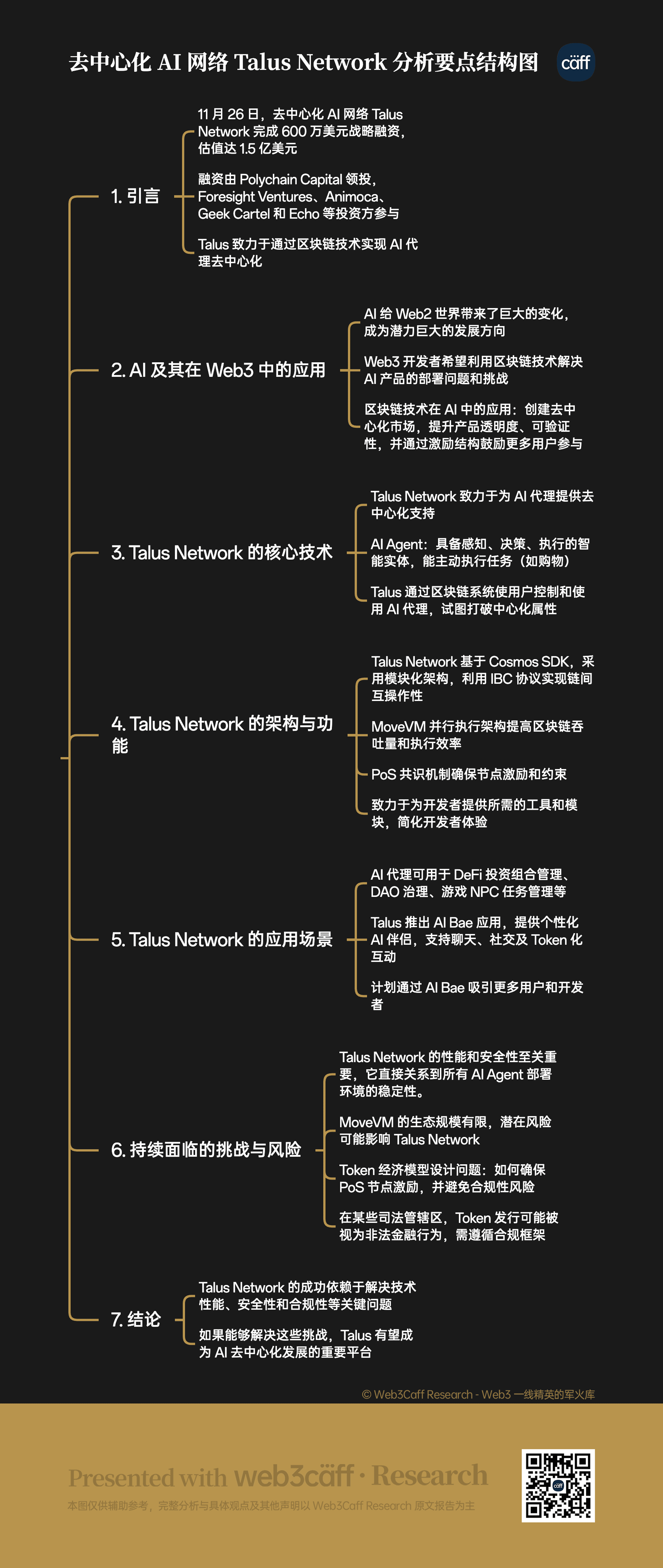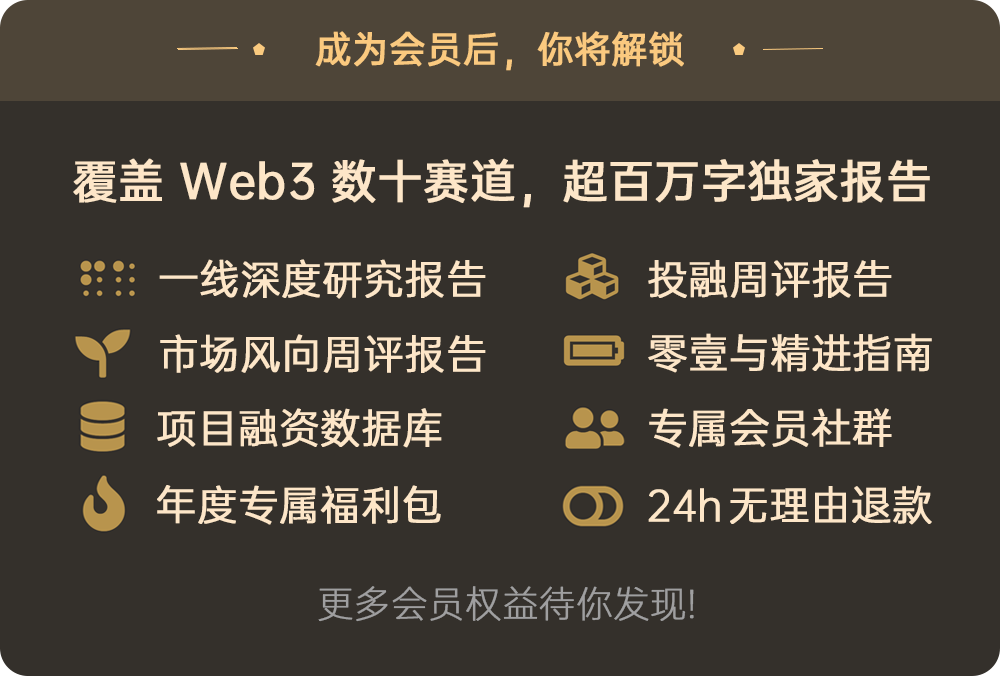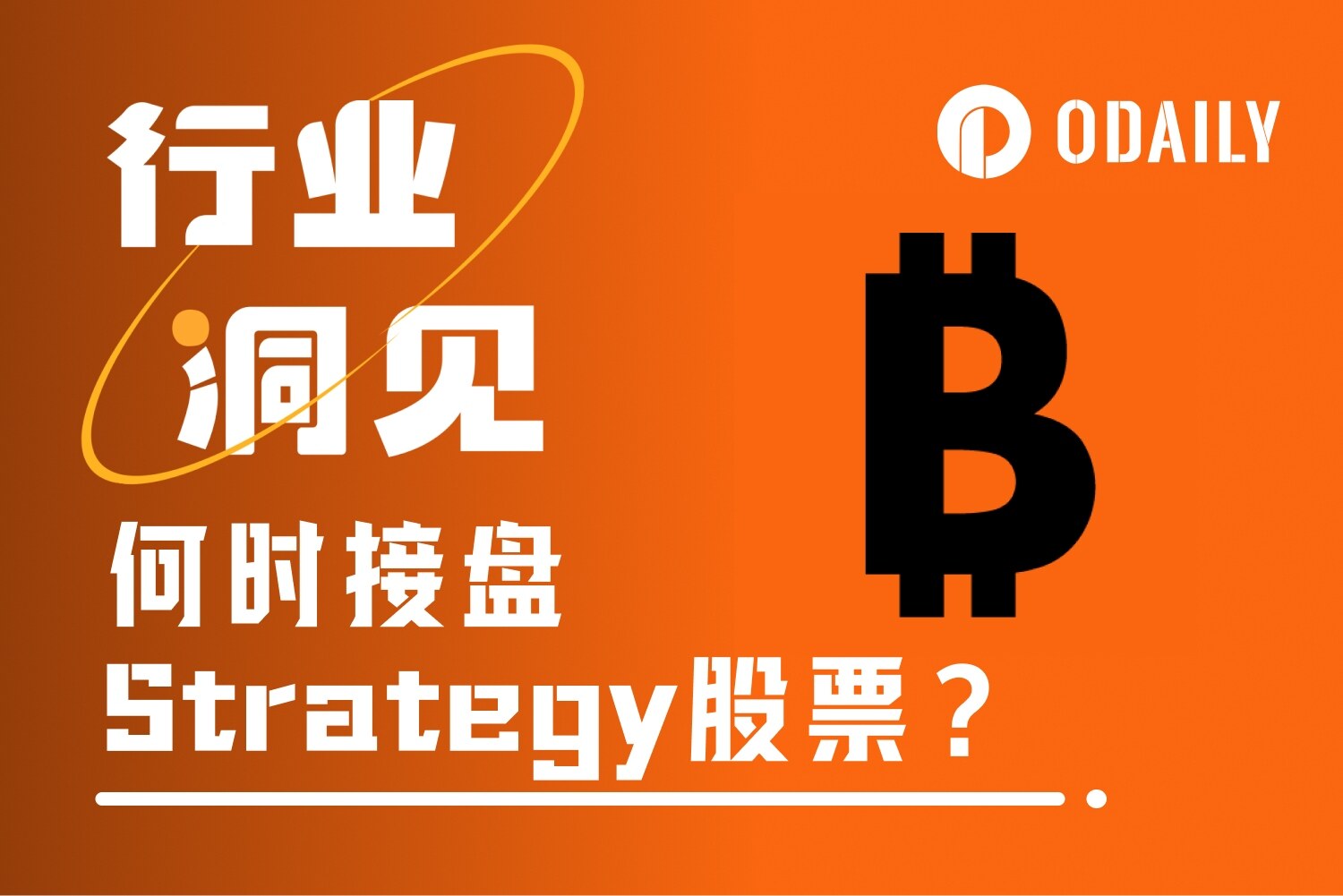How to explore the frontiers of Web3? Web3Caff Research will carefully select the latest publicly disclosed Web3 financing projects for you, and provide analysis and comments. Look at the essence through the phenomenon - follow us immediately to sniff the market trends.
Author: ShirleyLi, Web3Caff Research Researcher
Cover: Logo by this project, Typography by Web3Caff Research
Word Count: The full text is over 1600 words
According to The Block report, on November 26, the decentralized AI network Talus Network completed a $6 million strategic financing round led by Polychain Capital, with a valuation of $150 million. This round of financing also attracted investors such as Foresight Ventures, Animoca, Geek Cartel and Echo, as well as several well-known angel investors.
The emergence of Artificial Intelligence (AI) has brought exciting changes to the Web2 world, and it has become one of the most promising development directions. For this brand-new application scenario, developers in the Web3 field naturally hope to use blockchain technology to solve the deployment methods and many challenges of AI products. This change can be reflected in creating a market that allows individuals to freely exchange data, model permissions and computing power, can be to make the provision of AI products more transparent and verifiable, and can also be to use the inherent incentive structure of the blockchain to encourage more users to participate in the contribution of computing resources. Against this background, Talus, which announced the financing this issue, is committed to providing a center for decentralized AI Agents.
AI Agent is a core concept in the field of AI, referring to an intelligent entity that can perceive the environment, make decisions and take actions. AI Agents use large language models as their "brain", but unlike large language models, they have the ability to exercise will, make choices and take actions, rather than just passively responding to external stimuli. For example, when a user wants to purchase an item through an AI Agent, the AI Agent does not just answer how to purchase the item, but directly calls the shopping application and payment program to place the order. [1] However, with the development of AI technology, various AI Agents have gradually emerged, but overall, these AI Agents have centralized attributes, with their data and products controlled by developers and companies, and users can only use the specific functions and products provided by these developers and companies. What Talus Network wants to do is to enable more people to control and use AI Agents through its decentralized AI system.
Specifically, the core part of Talus' AI system is the Talus Network blockchain specially designed for the AI field. Talus Network allows developers to independently design and deploy AI Agents on it. These AI Agents can perform transaction tasks, manage AI-driven investment portfolios, be used for outcome prediction and risk assessment, and so on, and they can also interoperate with each other. From an architectural perspective, Talus Network is based on the Cosmos SDK to implement its modular architecture, and uses the IBC protocol to achieve interoperability between different chains. In addition, Talus Network utilizes the parallel execution architecture of MoveVM to ensure the throughput and execution efficiency of the blockchain, and adopts the PoS consensus mechanism to constrain and incentivize all participating nodes. To simplify the developer experience, Talus provides them with all the tools and modules needed to build, deploy and tokenize AI Agents directly on the Talus Network. In simple terms, AI Agents can be understood as dApps. Talus Network, as the underlying Layer1 that supports the construction of these "dApps", has features that are not much different from other Layer1s, and it also needs to ensure the performance of on-chain execution and transactions.

By providing a on-chain deployment environment for AI Agents, Talus can offer developers and users a diverse range of usage experiences. For example, users can use Talus' AI Agents to manage their DeFi portfolios and DAO governance fund allocations, as well as manage in-game NPC tasks. Furthermore, to further enrich the Talus ecosystem, the team plans to launch an application called "AI Bae" by the end of the year, which aims to provide users with personalized AI companions that support chatting, social, and Token-based interactions. At that time, the Talus ecosystem is expected to attract more users and developers. However, like other Layer1s, Talus Network also faces relevant risk challenges. First, the performance and security of the Talus Network are crucial, as they directly affect the stability of the deployment environment for all AI Agents. Secondly, the choice of MoveVM can bring parallel processing technology to Talus Network, which can help improve the network's transaction throughput and response speed, but the current ecosystem scale of MoveVM is limited, which means that if there are potential risk issues with MoveVM, Talus Network will inevitably be affected. In addition, the Talus team plans to launch an ecosystem Token, which not only involves the design of the Token economic model, such as how to provide continuous incentives for PoS nodes while maintaining the positive operation of the entire system, but also how to avoid potential compliance challenges, as in some jurisdictions, Token issuance may be seen as securities or illegal finance, which requires the Talus team's Token issuance to follow a compliance framework. Only in this way can Talus have the potential for sustainable development.
Key Points Structure Diagram:

References
[1] A Thousand-Word Article Analyzing the Principles and Applications of AI Agent Technology[2] Talus Network raises Polychain-led funding round at $150 million valuation, plans TikTok-linked 'AI dating experience'[3] Talus: The Smart Agent Hub for the Web3 AI Era[4] Introducing Talus Network: The AI Smart Agent Hub[5] What is Talus AI? Decentralized AI Agents ExplainedDisclaimer: This report is written by Web3Caff Research, the information contained herein is for reference only and does not constitute any prediction or investment advice, proposal or offer. Investors should not rely on such information to purchase, sell any securities, cryptocurrencies or adopt any investment strategy. The terms and expressions of opinions in the report are intended to help understand industry trends and promote the responsible development of Web3 including the blockchain industry, and should not be interpreted as explicit legal views or the views of Web3Caff Research. The views in the report only reflect the author's personal opinions as of the date mentioned, and are not related to the position of Web3Caff Research, and may change with subsequent developments. The information and views in this report come from proprietary and non-proprietary sources that Web3Caff Research believes to be reliable, but do not necessarily cover all data, nor guarantee their accuracy. Therefore, Web3Caff Research does not make any form of guarantee about their accuracy and reliability, nor does it assume any responsibility for errors and omissions (including negligence) that may cause harm to any person. This report may contain "forward-looking" information, which may include forecasts and predictions, and does not constitute a guarantee of any forecast. Whether to rely on the information in this report is entirely up to the reader. This report is for reference only and does not constitute an investment advice, proposal or offer to purchase or sell any securities, cryptocurrencies or adopt any investment strategy, and you should strictly comply with the relevant laws and regulations of your country or region.










